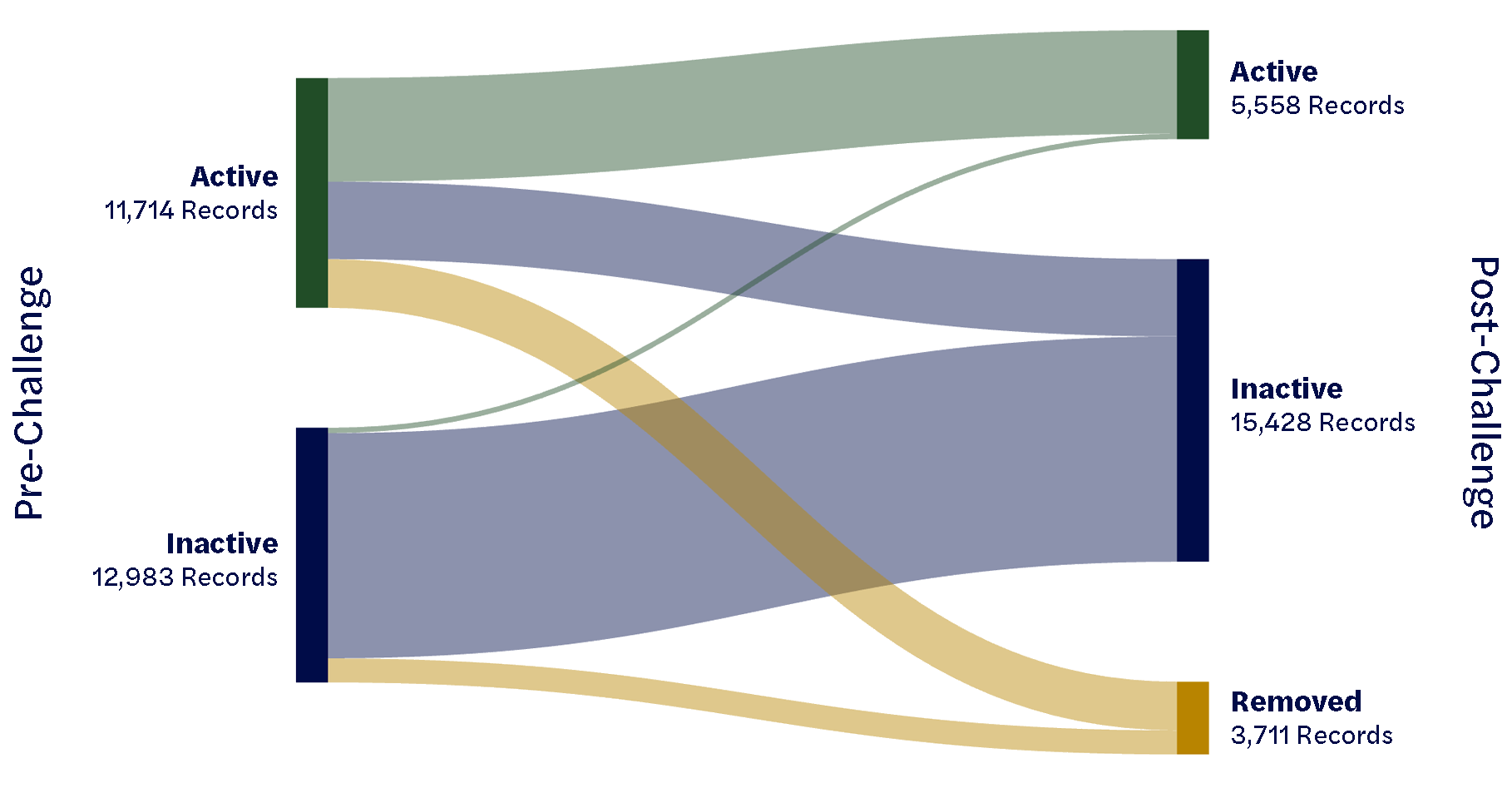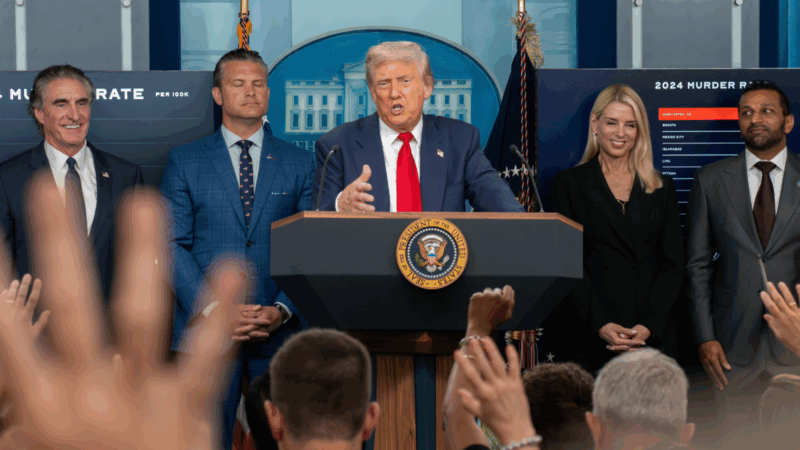Clint Swift is a data scientist and policy strategist working to ensure free and fair elections and providing research and analysis for our voter roll monitoring program, VoteShield.
Analyzing Mass Voter Challenges in 2024
- October 9, 2024
Mass challenges are frivolous, redundant, and are an attempt to circumvent federal law, but largely fail.

Most states have statutes and procedures that allow for other registered voters (i.e. ordinary citizens rather than election administrators) to challenge the eligibility of individuals on voter registration rolls or who cast ballots either by mail or in person. Mass challenges occur when one or a few individuals challenge the eligibility of a large number of others who they do not know and frequently have never met. These types of challenges have been on the rise since the 2020 general election.
Since the beginning of 2024, VoteShield and Protect Democracy have reviewed about 35,000 challenged records across Florida, Georgia, Michigan, Missouri, Ohio, and Pennsylvania. Although false claims of non-citizen voting abound, only 34 (less than 0.1%) of the challenges we have obtained are related to citizenship status. Nearly all (98.6%) of these challenges purport that the challenged voters no longer reside at their address on record, and thus should be removed from the rolls.
Additionally, these challenges are duplicative of regular voter roll maintenance undertaken by election administrators and frequently rely on flawed procedures and/or data. Most of the challenge lists were derived from matches to the postal service’s National Change of Address data, which election administrators already regularly use as part of their systematic maintenance of the voter rolls. Even though these efforts are redundant, challengers persist in submitting them in an attempt to circumvent the federal waiting period and have these records removed immediately. These attempts have largely failed.
Challengers rely on stale data
Of the challenges we have examined, 435 were for voters who had already been removed from the rolls prior to their challenges. This suggests that challengers are using outdated voter roll data to compile their lists. In fact, we can estimate how old their data could be by identifying when these voters were removed. In Florida, for example, the challenges relied on voter data that was at least 5 months old and a series of Georgia challenges from January used data that were at least 7 months old. Not only did this produce inaccurate challenges, but it also led to several challengers challenging the same voters multiple times, creating even more unnecessary and redundant work for election administrators.
More than half of the challenged voters were already flagged for removal
When an election administrator believes that a voter no longer lives in the jurisdiction, they mail them a forwardable notice and place them on inactive status where, according to federal law, they must wait for 2 federal election cycles before they may be removed (unless they respond to the notice indicating they no longer live in the jurisdiction). Of the challenges we have examined, more than half were already flagged through normal processes and placed in inactive status. Forcing election administrators to process challenges and again send notices to voters who have already been flagged is redundant, costly, and will detract from other crucial tasks that administrators must see to in preparation for November.
The statuses of voters before and after being challenged

Challengers try to circumvent the federal waiting period, but largely fail
The National Voter Registration Act requires that election administrators wait two election cycles before removing voters who are suspected, but not confirmed, to have moved out of the jurisdiction. When challengers seek the immediate removal of voters, they are asking local election officials to violate federal law. Thankfully, this pressure has largely failed; we have found that only about 15% of the challenges we examined were removed from the rolls (mostly in Florida), and it’s unclear whether any of those removals were directly attributable to the challenges or resulted from other normal list maintenance activities.
Conclusions
Mass challenges to voter registration do not assist election officials to “clean the rolls,” nor do they result in mass purges or the circumvention of the federal waiting period. What mass challenges have done is impose a significant and unnecessary burden on the local election officials who must process them. When these challenges aren’t entirely erroneous because they are based on inaccurate or outdated data, they are redundant to the hard work that election officials already do. In the end, these efforts are largely motivated by mis- and dis-information concerning voter fraud and backed by groups seeking to undermine public confidence in our elections.
Related Content
Join Us.
Building a stronger, more resilient democracy is possible, but we can’t do it alone. Become part of the fight today.
Donate
Sign Up for Updates Sign Up for Updates
Explore Careers Explore Careers
How to Protect Democracy How to Protect Democracy



